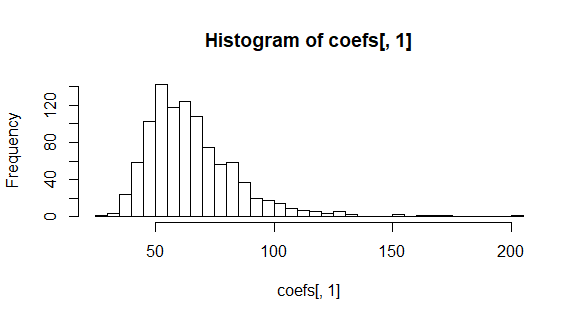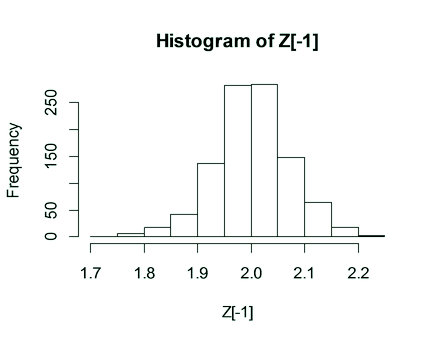I'm investigating the distribution of simple (1 dependent variable) linear regression coefficients. I've created 2 different models and I've investigated the distribution of the regression coefficients by simulating these models.
$X_i \sim\mathcal N(9, 3)$ and $Y_i | X_i ∼ N(10 + 35X_i,\ 10^2)$
$X_i \sim\mathcal N(3, 1)$ and $Y_i |X_i ∼ N(−3.5+2\exp(X_i),\ 5^2)$
As can be seen in the plots above, the coefficients in the first model are normally distributed. But the coefficients in the second model are clearly not normally distributed. Y and X are not in a linear relationship in the second case, and thus violate one of the assumptions for simple linear regression.
What's the reason for the coefficients not being normally distributed in the second case? Is it because one of the assumptions of the linear regression model is violated, or does it occur that the coefficients are not normally distributed in other cases as well (where all assumptions are met)?
I found another CrossValidated post that says that the coefficients are distributed according to $β∼N(β,(X^TX)^{−1}σ^2)$, is this always the case?



